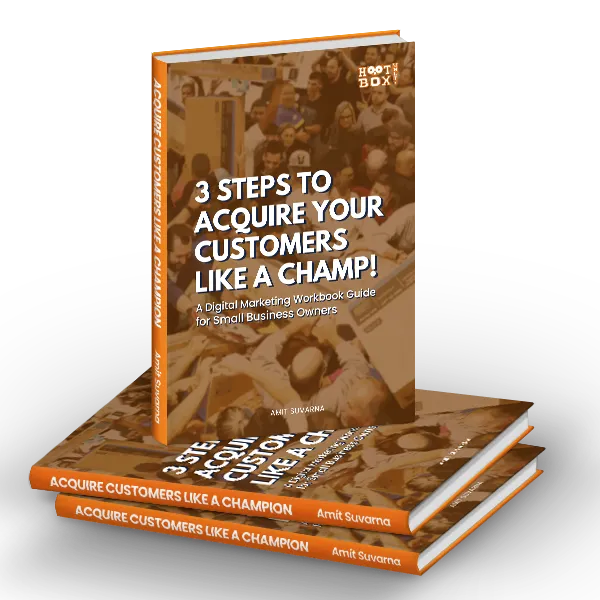There is such a thing as too much social media setting in almost to the verge of social media overload. This holds especially true if
a. You are an individual or group who happens to like being social or
b. You are an individual or organization who wants to make a mark in the big world of social muchness.
For a medium that’s just out of infancy and learning to walk, Social Media is remarkably overweight!
Most individuals spend an enormous amount of time on networks, scrolling through tweets, looking at posts or simply lurking through a barrage of ‘Selfies’ and promotional posts without ever knowing why. The outburst of information has meant that our average attention span is down to 8 seconds, a second lesser than that of a goldfish!
For organizations, being Socially Networked originally meant building interactive relationships with their audience. Sadly today, social has become just another platform for mass advertising/marketing. Platforms like Facebook are losing organic reach in favour of paid promotions. And marketers relying heavily on paid social ads flooding our Social feeds are just not helping their cause or anyone else’s. The idea of developing a community of promoting mutual well being on Social Media is in the dumps. It’s safe to say that the dilemma of Social Media stems from excess. And this social media overload is going to get much more complex before it gets better.
Social media is at a critical juncture and there is no telling how its ecosystem evolves beyond this point. During this transition phase of social media overload, abysmal attention spans and dwindling hype, what can organizations do to continue to use social media in an effective, non-intrusive way?
Understand your core purpose and consequences of being online
A sense of purpose needs to prevail through your organization’s social media efforts. Few common objectives are identified here:
- Brand building – For effective Service/Product and Brand recall and recognition.
- Engagement – Contributing to the conversation, communicating and interacting with loyal followers and community towards service/product/environment betterment.
- Sales Support – Pointing customer queries in the right direction toward issue resolution.
With a clear sense of purpose, you can ascertain your goals, and have baselines and tools in place to measure whether you are meeting them.
While purpose inspires action, always be prepared for unexpected reactions. Social media is a large and diverse universe sprinkled with uncertainty. Be mindful of the consequences.
Acknowledge that technology and people are ever-evolving which can lead to social media overload
Social Media reflects popular themes and evolves with the times and technology. Organizations need to understand there’s no guarantee that your efforts will be a silver bullet you were seeking. So set realistic expectations and be ready to change yourself. Sure, the lure of a potential market on a Social platform is tantalizing. But building relationships takes time, and there’s simply a lot of noise in the space. Accept that:
- Social Media is not a conventional advertising/marketing channel.
- Technology, language and culture of the various social media sites are diverse as the audience on them. Be relevant and contextual.
- Social media is always evolving, so successful methods can cease to work. Evolve the methods as well.
- Success may require effort from a team, not just one person.
LISTEN, before expecting your audience to
“The most basic of all human needs is the need to understand and be understood. The best way to understand people is to listen to them.”
― Ralph G. Nichols
Most Social Media entities broadcast, market or advertise, thus contributing to social media overload. What if organizations used Social as a listening tool instead? Organizations need to tune in to their audience and respond to their needs instead of just flooding pages with updates. Listening doesn’t come naturally to us and is very hard work. Rest assured the dividends can be plenty. For more on ‘How to listen’, stay tuned for coming posts!
Provide real value and reduce clutter. Sales will always be a backseat companion.
Listening to audiences allows organizations to generate valuable assets. Less is more in that respect. Think value over quantity. You will soon realize that people care about the content that is innovative, useful and relevant. This in turn might pique enough interest to drive sales. But don’t count on it entirely. Avoid putting all your eggs in one basket.
Use the tools to tell stories contextually. Even the paid ones!
The ecosystem of media consumption has evolved to match our changing needs and desires. Platforms like Twitter, YouTube, Facebook and so on have tried to accommodate this change, but the ways we tell our stories haven’t really followed suit. Gary Vaynerchuck, best-selling author and founder of VaynerMedia, describes how to be better storytellers in today’s “A.D.D. Culture.”
Question Everything! Stay updated! Choose what works!
Social media overload is real and it is going to take superhuman levels of managerial insight and finely tuned tools to stay above the game. So scrutinize your Social Media efforts and ask relevant questions. Encourage participation and feedback periodically and factor for play. Stay updated on trends to see how the transition of Social Media pans out.
And always be prepared for course correction.
As a small business, we know all this social media muchness can get heavy-handed. We are here to help if you need it. Get in touch!
Original Article on:
https://blog.verbat.com/surviving-the-age-of-social-media-overload/

